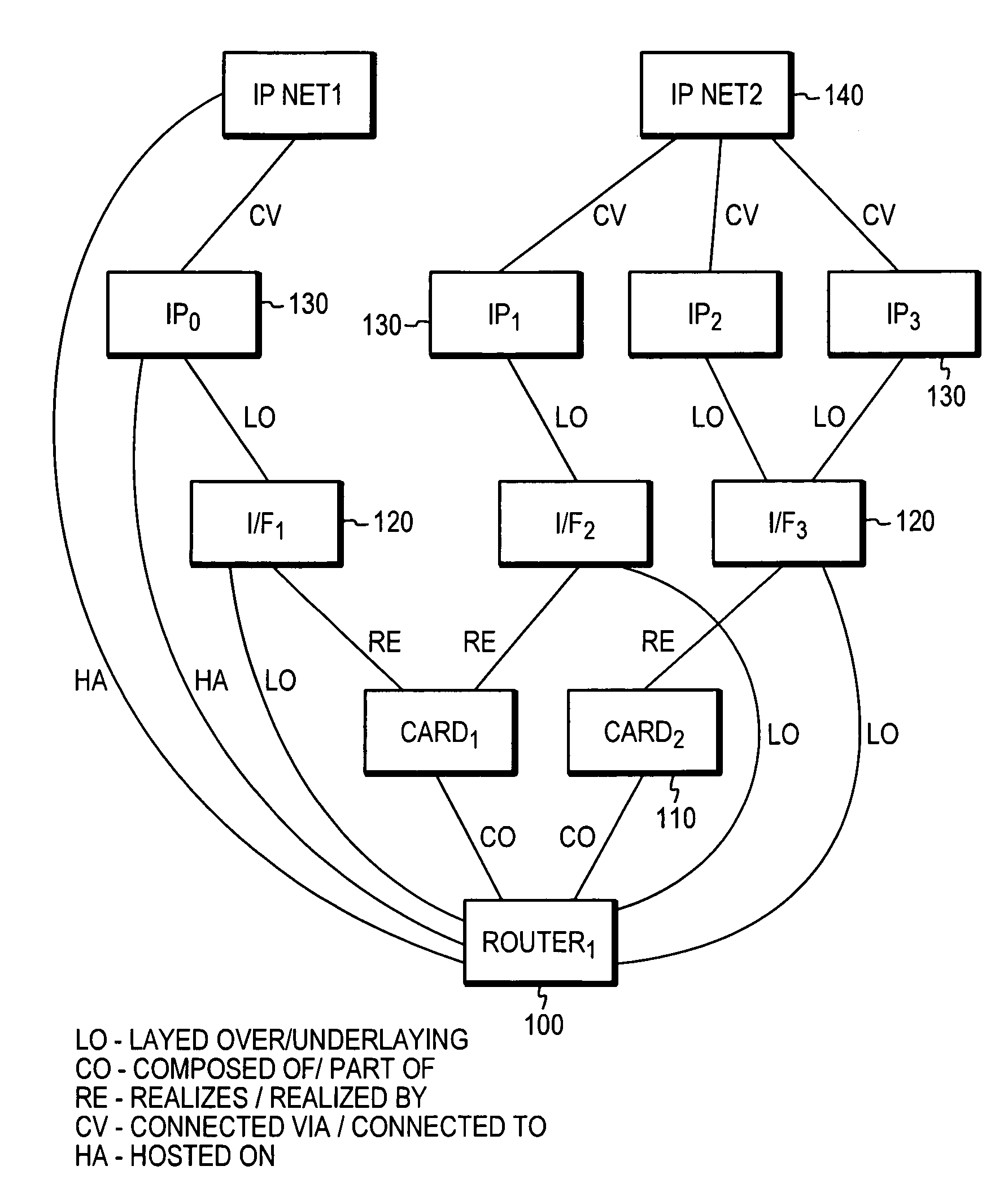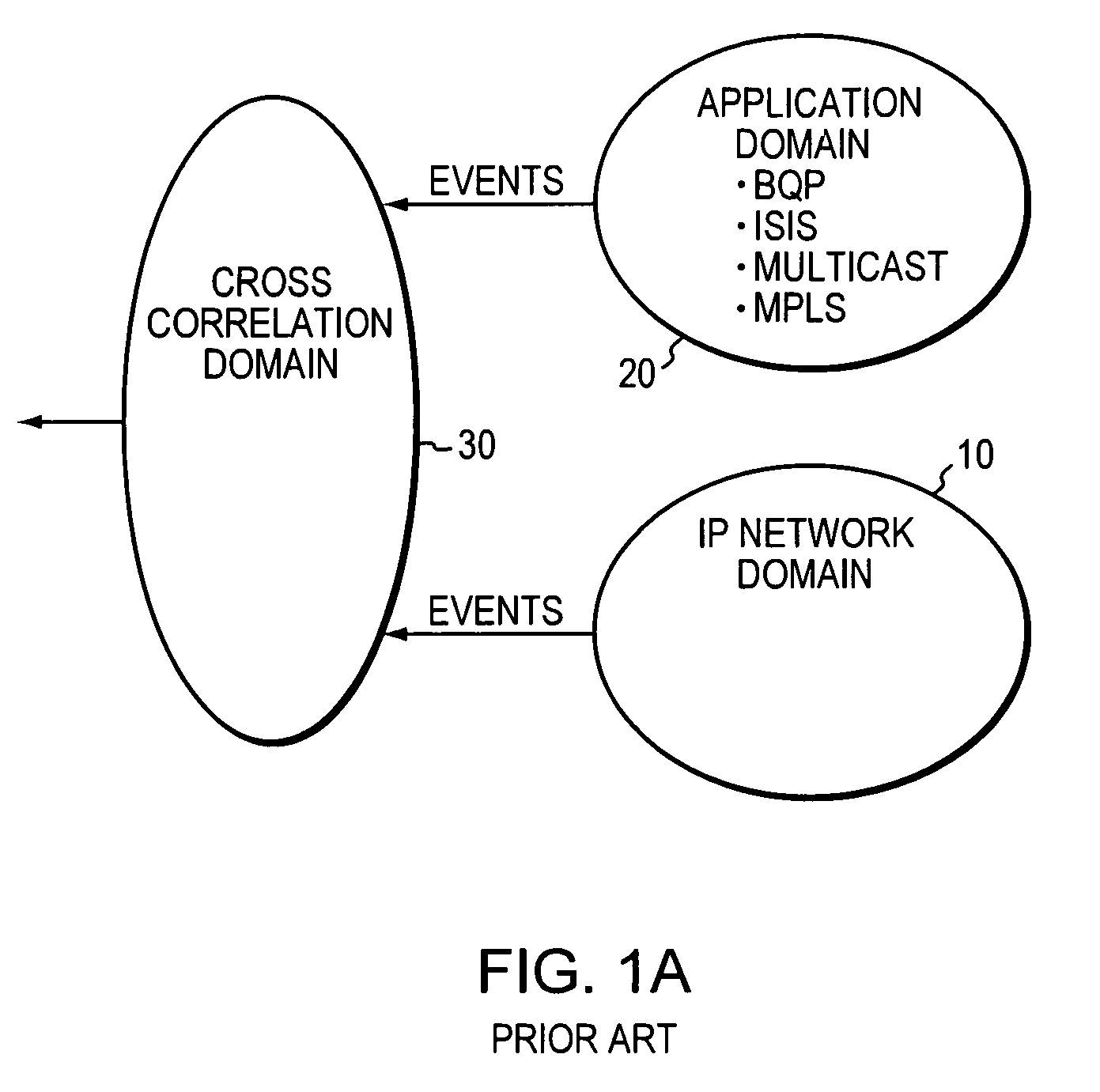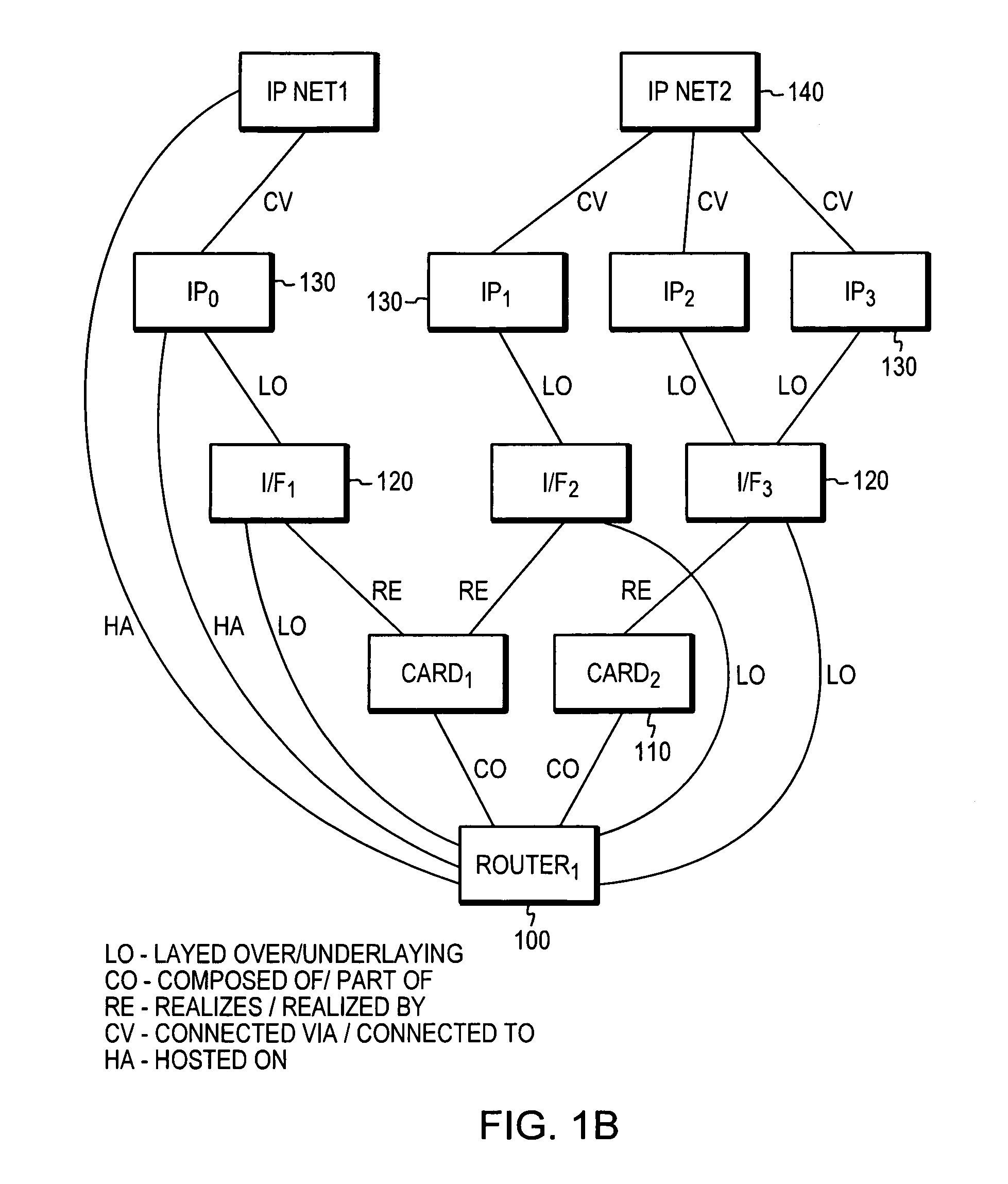Performing model-based root cause analysis using inter-domain mappings
a model-based root cause and mapping technology, applied in the field of network modeling, can solve the problems of extra computer resources, such as processing speed or memory, imposing an extra ordinary long time to obtain, and overburdening the computer system
- Summary
- Abstract
- Description
- Claims
- Application Information
AI Technical Summary
Benefits of technology
Problems solved by technology
Method used
Image
Examples
Embodiment Construction
[0022]FIG. 1A illustrates an exemplary multi-domain model representation of a conventional network. Multi-domain modeling is advantageous as it allows for distribution of common elements and / or functions into individual domains and further allows for scalability as the size or the number of components in the network increases. In this illustrated representation shown, infrastructure elements of an IP network are grouped together and modeled in domain 10. These elements may constitute of hardware and software elements that represent the physical elements of the network. For example, the IP network elements may comprise hardware and software elements that are described in the well-known OSI stack physical layer (layer 1) and data link layer (layer 2). Similarly, applications which are operating on the underlying hardware and software are modeled and processed in domain 20. In this illustrated example, the application domain 20 comprises the elements in the protocol to the application ...
PUM
 Login to View More
Login to View More Abstract
Description
Claims
Application Information
 Login to View More
Login to View More - R&D
- Intellectual Property
- Life Sciences
- Materials
- Tech Scout
- Unparalleled Data Quality
- Higher Quality Content
- 60% Fewer Hallucinations
Browse by: Latest US Patents, China's latest patents, Technical Efficacy Thesaurus, Application Domain, Technology Topic, Popular Technical Reports.
© 2025 PatSnap. All rights reserved.Legal|Privacy policy|Modern Slavery Act Transparency Statement|Sitemap|About US| Contact US: help@patsnap.com



